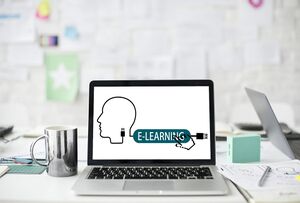Online: developing the seminar: Difference between revisions
Jump to navigation
Jump to search
No edit summary |
Olaf.schroth (talk | contribs) No edit summary |
||
| (6 intermediate revisions by the same user not shown) | |||
| Line 2: | Line 2: | ||
{| class="wikitable" | {| class="wikitable" | ||
|- | |- | ||
| '''Executive Summary Step 2: Developing the seminar as hybrid online and on-site (OS) activity''' | |||
|- | |||
| The aim in designing the CO-LAND online seminar was to implement the constructivist teaching theory approach with synchronous as well as asynchronous teaching methods, together with online and offline media. To illustrate, this chapter provides links to the the COLAND Wiki. | | The aim in designing the CO-LAND online seminar was to implement the constructivist teaching theory approach with synchronous as well as asynchronous teaching methods, together with online and offline media. To illustrate, this chapter provides links to the the COLAND Wiki. | ||
|} | |} | ||
| Line 8: | Line 10: | ||
[[File:E-learning.jpg|thumb|E-learning]] | [[File:E-learning.jpg|thumb|E-learning]] | ||
[[Target groups]] | * [[Target groups]]<br> The CO-LAND OS addresses two clear target groups: the teaching or tutoring team and the students. External participants are considered a third target group. | ||
* [[Preparing the course and the virtual learning environment]]<br> The course preparation includes various steps elaborated in this section. | |||
* [[Implementing the teaching and learning activities]]<br> Based on the teaching content, the implementation of the online seminar within the prepared virtual learning environment includes open education resources, assignments and collaboration. | |||
* [[Exam, assessment and grading]]<br> The examination assignments in the CO-LAND OS consists of elaborating a case study on the basis of the template provided. | |||
* [[COLAND_Case_Study_Template_2018|COLAND Case Study Template]]<br> Against this background, the CO-LAND case study template guides participants of the CO-LAND Online Course during their learning process. This framework structure is available on the wiki from the beginning of the seminar. | |||
== Further Reading == | |||
* [https://jolt.merlot.org/vol10no4/Lister_1214.pdf Lister, Meaghan (2014). “Trends in the Design of E-Learning and Online Learning” MERLOT Journal of online learning and teaching Vol. 10, no. 4.] | |||
[https://jolt.merlot.org/vol10no4/Lister_1214.pdf | |||
Latest revision as of 11:24, 5 January 2021
| Executive Summary Step 2: Developing the seminar as hybrid online and on-site (OS) activity |
| The aim in designing the CO-LAND online seminar was to implement the constructivist teaching theory approach with synchronous as well as asynchronous teaching methods, together with online and offline media. To illustrate, this chapter provides links to the the COLAND Wiki. |
- Target groups
The CO-LAND OS addresses two clear target groups: the teaching or tutoring team and the students. External participants are considered a third target group. - Preparing the course and the virtual learning environment
The course preparation includes various steps elaborated in this section. - Implementing the teaching and learning activities
Based on the teaching content, the implementation of the online seminar within the prepared virtual learning environment includes open education resources, assignments and collaboration. - Exam, assessment and grading
The examination assignments in the CO-LAND OS consists of elaborating a case study on the basis of the template provided. - COLAND Case Study Template
Against this background, the CO-LAND case study template guides participants of the CO-LAND Online Course during their learning process. This framework structure is available on the wiki from the beginning of the seminar.
